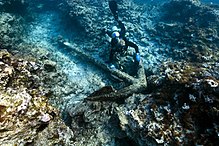Career
A letter dated 16 May 1812 reported that Hermes had been re-registered at London. [3] She entered Lloyd's Register (LR) in 1813 with Harvey, master, Haslop, owner, and trade London–Smyrna. [2]
LR for 1816 showed Hermes with W.Moore, master, changing to J.Streffen, Haslop, owner, changing to Douglas & Co., and trade London–West Indies. [4]
On 30 November 1818 Hermes, Bond, master, put into Lerwick, leaky. She had been sailing from Archangel to London. She had had to throw part of her cargo overboard. [5]
LR for 1819 showed Hermes with Bond, master, changing to Taylor, owner Douglas, changing to Gales, and trade London–Havana, changing to London–South Seas. [6]
1st whaling voyage (1819–1820): Captain J. Taylor sailed from London 6 April 1819. Hermes returned on 5 September 1820. [7]
Fate
In 1820 Captain Taylor sailed from London bound for the Sandwich Islands, for Hermes's 2nd whaling voyage. [7]
Hermes was lost on 26 April 1822 in the South Seas. Her crew were rescued. [8] She was wrecked on a coral reef in the NW of the Hawaiian Islands. Hermes was in company with the whaler Pearl, which also was wrecked at the same time. Pearl was wrecked first; Hermes wrecked when she came to Pearl's assistance. The 57 men from both crews were able to land on one of the atoll's small islands. [9] They were able to salvage provisions that enabled them to survive for some months. They also salvaged timbers that they used to build a 30-ton (bm) schooner that they named Deliverance. Fortuitously Thames sailed by and rescued most of the survivors before Deliverance had been completed. [a] Still, James Robinson, carpenter on Hermes who had led the construction, and eleven other survivors chose to sail Deliverance to Honolulu. [12] [9] There Robinson and another of the crewmen formed the James Robinson & Co boat repair company. [13]
LL reported on 18 April 1823 that both Hermes and Pearl had been wrecked and that their crews had been saved. [14]
Pearl and Hermes gave their name to the Pearl and Hermes Atoll. [15]
As late as 1870s the keel stem and stern could be seen on the bottom. [16]
Postscript: The wreck of what may have been Hermes or Pearl was discovered 20 September 2004 at the atoll. [12]
This page is based on this
Wikipedia article Text is available under the
CC BY-SA 4.0 license; additional terms may apply.
Images, videos and audio are available under their respective licenses.

